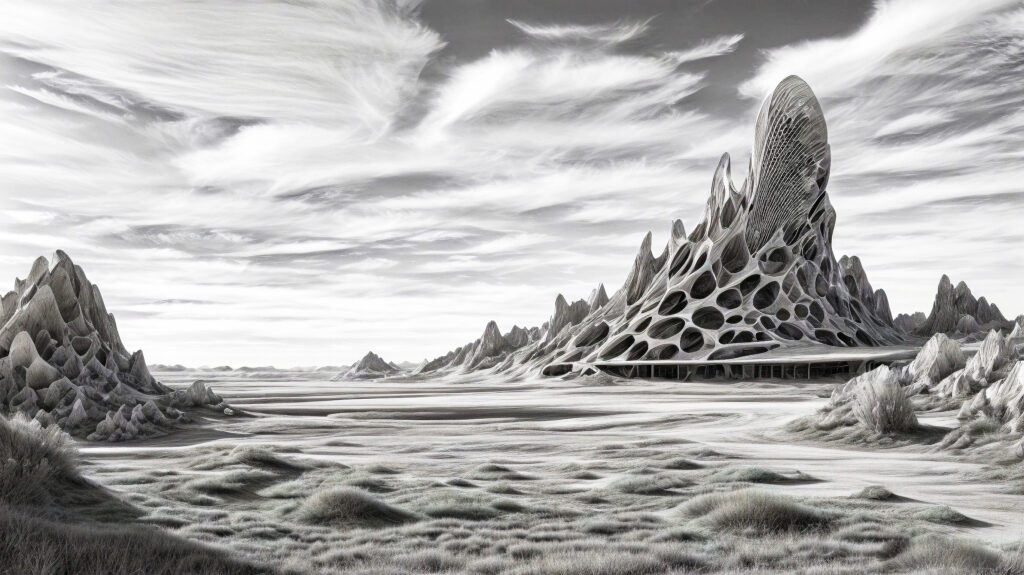
The Aftermath of the Whistie Raid

– Milky Way Digest [MWD} vol 6 pg. 27 –
As I stepped out of the landing pod and onto the surface of the lonely planet, I couldn’t help but feel a deep sadness wash over me. I was part of a team of explorers sent to survey the aftermath of the raid, to assess the damage and see if any remnants of civilization could be found. The first thing that struck me was the complete lack of vegetation. The once-green hills and valleys were now barren, dotted only by jagged mountains and the occasional rock formation. The once lush and vibrant world was now nothing more than a toxic wasteland, a victim of the merciless Whisties.
As we made our way through the rugged terrain, we soon came upon the remnants of a rocket launch ramp and terminal, clearly destroyed by the Whisties in their pursuit of destruction. The sight was a painful reminder of the brutal reality of the raid and the senseless destruction wrought by the extremists. Despite the apparent danger posed by the toxic atmosphere, we pressed on, determined to uncover any remaining signs of life on the planet. We were soon rewarded with a genuinely astonishing discovery: objects similar to those found on Easter Island’s old Earth. These massive figures towered over the landscape, making everything else seem small.
As we studied the objects, we couldn’t help but wonder about the civilization that must have once existed on this world. Who were these people?
What was their culture?
And why did the Whisties see fit to destroy them?
These questions, and many others, would remain unanswered. The world we were on was fragile, with a biosphere that the raid had severely impacted. There was no hope for re-colonization, no chance for redemption or recovery. The Whisties had succeeded in wiping out an entire civilization, leaving behind only their legacy of destruction and despair. As I wrote in my journal, I couldn’t help but think of the countless lives lost in the raid. How many families had been torn apart, and how many dreams had been shattered? And what of the world do we now call home? Was it doomed to suffer the same fate as this planet, destroyed by war and extremism?
These were heavy thoughts, but I knew I had a duty to share the story of the Whistie raid. The world needed to know what had happened here so that history would not repeat itself. I vowed to return to my own planet and spread the word about the tragedy in this lonely world. And so, with a heavy heart, I boarded the landing pod and made my way back to the safety of my ship. I left behind the remnants of a once-great civilization that had fallen victim to the Whisties.

